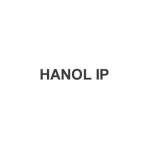As the global marketplace becomes more crowded, we are increasingly seeing similar conflicting trademarks being filed and/or used.
Although this trend is common throughout the world, there are significant differences between jurisdictions in how these trademarks are treated under trademark law. In some jurisdictions, it is a ground for rejection, but in others, it is not. South Korea conducts substantive examinations on the existence of prior registered or filed trademarks.
The senior conflicting mark rejection accounts for nearly 40% of the trademark rejections in Korea. There is no doubt that this is one of the biggest hurdles for trademark filers in Korea. The newly adopted consent agreement system, which entered into effect on May 1 2024, addresses this problem and provides an attractive solution. The system will be particularly useful for global filers that have many related entities and file similar related marks all over the world.
The consent agreement system
Before the new system, when a trademark application was rejected for being similar to the senior mark (Article 34-1-7 and Article 35 of the Korean Trademark Act), it was possible to overcome the rejection by temporarily transferring the ownership of the pre-registered/filed trademark or later-filed trademark from one party to another (the assign-back approach). However, this two-step method was complicated and time consuming.
Under the new law, an applicant can submit a simple consent agreement signed by both parties to the KIPO to address this issue. The agreement can be submitted at any time while the trademark application is pending. According to the KIPO’s guidelines, the agreement form required for the purpose of trademark registration is quite simple, and is similar to the ‘naked’ consent agreement of the US.
Applicants need not submit any evidence or reasons why they believe there is no likelihood of confusion between the marks. For the purpose of submission to the KIPO, conditional agreement or blanket agreement is not acceptable.
Major features of the Korean consent system
Similar systems have been implemented in many countries around the world, including the US, some European countries, and China, as well as Japan recently, although the details of the requirements and scope of application vary. The following are some of the features of the Korean system;
Time of submission – a consent agreement can be submitted until the application is finally rejected, even during an appeal proceeding against a final rejection at the Intellectual Property Trial and Appeal Board of the KIPO. However, it cannot be submitted to the appellate Intellectual Property High Court.
Application scope – the new system applies to all trademark applications, including international applications that are pending on the effective date.
Grounds that are not applicable – the submission of a consent agreement will not resolve the KIPO’s office action when the trademark and the designated goods are identical. Here, the identical trademark, in this context, means a “completely identical trademark”. Therefore, the same character compositions with a different font or colour, for example, can be registered by submitting a consent agreement.
The new system is not applicable when the rejection ground is that the mark is similar to the senior well-known mark (Article 34-1-9 of the Trademark Act), there is a likelihood of confusion with the famous mark (Article 34-1-11 of the Trademark Act), or a likelihood of misleading with regard to the quality of goods or deceiving consumers (Article 34-1-12 of the Trademark Act); thus, submission of a consent agreement cannot cure the defect.
Recordation in the trademark register – the fact that the trademark was registered under the consent agreement system (for the later mark) and the existence of such consent (for the senior mark) are entered in the register.
Cancellation – after registration, if any party uses the trademark for the purposes of unfair competition and causes consumer confusion or deceit with regard to the quality of goods, the trademark can be cancelled by a cancellation trial. A cancellation claim can be made by anyone, not just the parties to the consent agreement (Article 119-1-5 bis and Article 119-5 of the Trademark Act). Furthermore, if any trademark is cancelled for this reason, an identical or similar mark to the cancelled mark cannot be filed within three years from the cancellation (Article 34-3 of the Trademark Act).
Considerations: building up bargaining power and planning portfolio management strategies
While a trademark consent agreement system can be a very useful tool for trademark filers, especially those that manage many related entities, this system also poses several potential risks to the parties, and probably more to those that give consent. For example, when the other party uses a modified form of a trademark instead of the one defined in the agreement, it may be difficult to claim a trademark infringement at a later time. There is also a risk of brand dilution. To prevent this, parties may have to continuously monitor the other party’s activities to ensure its proper use of trademarks.
Because of the above concerns, the senior trademark holder may be reluctant to give consent, unless the trademark is in a weak position, such as carrying the possibility of being subject to a non-use cancellation.
Therefore, from the perspective of seeking consent as a later filer, it may be necessary to build up some bargaining power to negotiate in a favourable position. Checking the status of the other party's trademarks in other goods and/or in other countries, applying for the trademark registrations, or starting to use the trademarks in advance in non-preempted goods and/or countries can help to create such bargaining power. In a sense, the consent agreement system is a power balance game.
Recently, Korea has implemented several new measures in the trademark law. Starting from May 1 2024, divisional applications for international applications became possible. Before that, a partial refusal system was adopted (February 4 2023). As more options are added, more decisions or selections must be made. Strategic trademark management plans have now become more important than ever in Korea.












